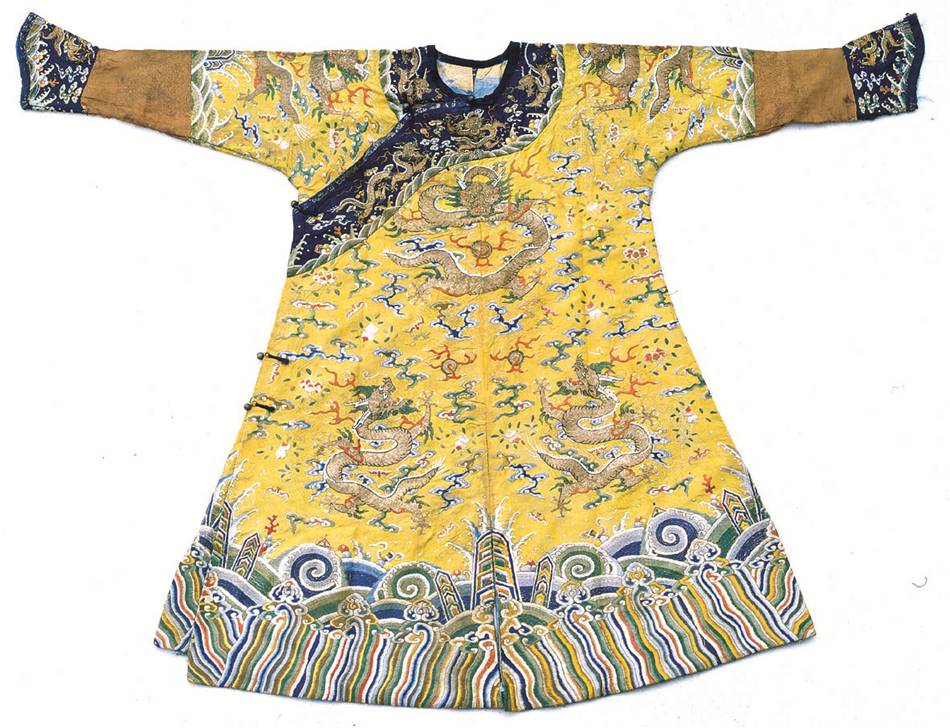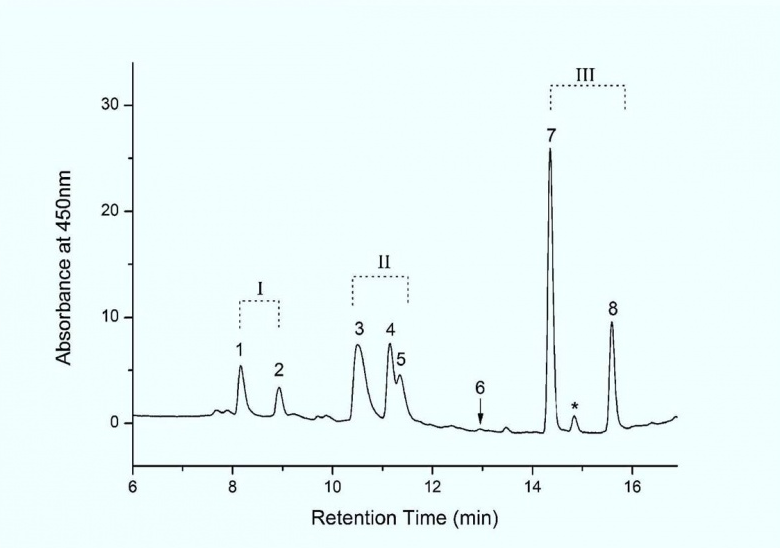Difference between revisions of "CNSM 1858, Small Dragon Robe, China (Qing Dynasty, 1644-1911 CE)"
(Created page with "== Artifact Information == Small Dragon Robe, China (Qing Dynasty, 1644-1911 CE). Height: 94 cm Width: 136 cm Exisiting dragon robes are far from rare. This one however, re...") |
|||
| Line 11: | Line 11: | ||
China National Silk Museum, Hangzhou, China. #1858. | China National Silk Museum, Hangzhou, China. #1858. | ||
| − | [[File:CNSM | + | [[File:CNSM 1858 pic1.jpg|center|frame|Image of the small Dragon Robe. © China National Silk Museum, Hangzhou, China ]] |
== Analytical instrumentation and procedures == | == Analytical instrumentation and procedures == | ||
Revision as of 11:02, 18 January 2018
Artifact Information
Small Dragon Robe, China (Qing Dynasty, 1644-1911 CE). Height: 94 cm Width: 136 cm
Exisiting dragon robes are far from rare. This one however, really is, due to its small size. The dragon motifs are exquisitely worked on a yellow silk ground with gold couching technique while polychrome silk threads are used for clouds, bats and flowers. The most plausible explanation for a dragon robe of this size is that it is tailored specially to fit a child emperor. (depicted by Yan Xue, translated by Huiwei Shen).
China National Silk Museum, Hangzhou, China. #1858.
Analytical instrumentation and procedures
The dye was extracted from a thread (0.2-1mg) of the archaeological object in a solution of pyridine/water/1.0M oxalic acid as described by Mouri and Laursen [1]. The solution was evaporated to dryness under a nitrogen flow, and redissolved in 50 μL MeOH/H2O (1/1); subsequently, 20 μL of dye solution was injected onto HPLC column.
An extract was analyzed on an HPLC-PDA-MS system consisting of a Shimadzu LC-20A high performance liquid chromatography, a Shimadzu SPD-M20A photodiode array detector and a Thermo LTQ XL ion trap mass spectrometer. The separation was performed on a Shim-pack XR-ODS column (3.0 mm × 75 mm, 2.2-μm particle size) and a Phenomenex Luna C18 column (2.0 mm × 150 mm, 3-μm particle size). Columns were eluted with acetonitrile-water gradients containing 0.1% formic acid at a flow rate of 0.3 mL/min.
Summary of results
A mixture of carmine scale insects, lac and madder was identified for red dye. Crimson dye contained tannins, carminic acid, alizarin and purpurin. Blue dye was obtained from indigo plant.
Editor's note: The identification of carminic acid and usage of multiple red dye sources in one pieces was quite unique. The author is open to further discussion and would like to do collaborative work with institutions that have done similar research or have access to similar objects.
HPLC profile
References
[1] [1] Xu X. Studies of samite with birds from Tibetan Tombs in Dulan of Qinghai. China Tibetology 1996; 1: 3-26.
[2] Richard A. Laursen and Chika Mouri "Decomposition and analysis of cathamin in safflower-dyed textiles", e-Preservation Science 2013, 10, 35-37.


